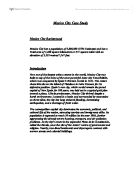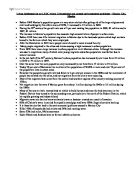Economy
Mexico City dominates the whole country’s economy. The Federal District of Mexico City produces a significant portion of the total gross domestic product of the country. The city is the centre of manufacturing, and contains about 45 percent of the nation's industrial production. Exports include textiles, chemicals,click pharmaceuticals, electronic items, steel, and transportation equipment, most of the cities trade is done with the U.S. The city is also important in Mexico's banking and finance industries and home to the reserve bank and the stock exchange click. The concentration of economic activity in the city attracted people from rural areas in search of employment. People moved to the city faster than new jobs were created.
The city is the centre for Mexico’s commercial activity and is a major tourist area.
Agriculture, mining, and trade dominated Mexico City’s economy for the most part of its history especially agriculture. Bu an industrial economy began to take root in the early 1900s and the population began to flourish.
Cultural
Being one of the oldest cities in the Americas, Mexico City contains thousands of years of cultural achievement.
Mexico City dominates the country's cultural life with numbers of universities, museums, and cultural institutions that are not seen in other Mexican cities. One-third of Mexico's institutions of higher learning are located in the capital, the largest being the . Its rapid rise in enrollment, from 40,000 in 1960 to 135,000 in the mid-1990s, reflects both the increase in the city's population and the rising aspirations of Mexicans.
The Historic Centre of the city lies in the heart of the downtown area surrounding the Zócalo click, which is the second largest plaza in the world, surpassed only by Red Square in Moscow. A rather overwhelming public space, the Zócalo is the scene of major public ceremonies and military displays. Talk while reffering to pic Overlooking the Zócalo to the north is the Cathedral Metropolitana. It is the largest cathedral in North America. The Palacio Nacional which once housed the president is located on the east side of the Zócalo. The zocolo was built at the beginning of the city Click point out historic map and zocolo. There’s the Zocolo in the middle where people would have accumulated to trade goods.
Whilst the number of parks in the city is quite sparse it does contain the countries largest park, Chapultepec click which is 2000 acres of woods, lakes, hiking trails, playgrounds, amusement parks, a zoo and excellent museums. Museums are a trademark of Mexico City and some famous ones include Mexico's Museum of Modern Art, the Museum of Natural History, and the National Museum of Anthropology. In total, the city actually has around 160 museums, over 100 art galleries, and some 30 concert halls.
Sport is a significant part of Mexican culture and most of Mexico’s major sporting events are staged in Mexico City. Click Mexico City is the place to go to see Mexico’s most popular sport soccer, bullfighting, baseball, boxing and horse racing. The city has one of the largest stadiums in the world which seat 130,000 people and was the host of the 1968 Olympics. Mexico is the only city in Mexico where you are likely to see big name bands touring, theatre productions and opera.
The city is home to many festivals including the principal religious festival which is the holy day of guadelpe the patron saint, the festival basically brings the hustle and bustle of this city to a short halt with many shops closing click.
City Of Inequality
Every day, hundreds of people flock to Mexico City in search of a better life - many getting no further than the growing shanty-towns that ring the outskirts click. These stand in harsh contrast to the stylish, modern offices click and apartment blocks located in prestigious parts of the city. The major condition dividing the city's population is wealth. Mexico City is a city of sharp social contrasts. It plays host to the poverty of many of its inhabitants, but also to the luxury and refinement of others. Wealthy residential sections are characterized by housing and suburban retail centres that rival the most luxurious in the world. These neighbourhoods are often in sharp disparity to the poorer sections click, where housing is substandard, access to basic services such as water, electricity, drainage, and paved streets is limited, and the standard of living is well below the poverty level. Almost half of housing in Mexico City consists of self help structures, which are communities built illegally on government owned land, much like favelas but the occupants improve he look of the house. These structures are open to wind rain and have no access to water, garbage disposal, electricity and minimal healthcare facilities. Healthcare rates are just too expensive for the poor to pay for.
People moved to the city faster than new jobs were created. Many of these new residents were unskilled workers. They were unable to find employment in the city, contributing to problems of unemployment. With no legitimate way of earning money, the poor have had to take drastic measures. Unfortunately, this growing level of poverty and rapid growth has resulted in major urban problems, including crime, poor housing, some of the worst pollution in the world, poor sanitation and terrible traffic.
The crime in Mexico city click is among the worst in the world. Over 3,000 kidnappings were reported in 2003, ranking as the second highest in the world. The rich have resorted to hiring bodyguards. The black market for example is a very large illegal operation contributing to the crime crisis giving many people options for obtaining illegal items, you buy anything on the black market from drugs to bombs and there’s been instances where people like tourists have gone to a bar in Mexico city, got absolutely wasted, passed out and have woken up the next morning to find that they are missing one of their kidneys. Criminals have surgically removed the kidney and it’s more than likely for sale on the black market.
Traffic
The traffic in Mexico city is the worst in the world click, each day 5 million vehicles can be seen clogging the small road networks of Mexico city, Therefore vehicles are the main contributor the cities largest environmental problem air pollution Click. From the graph we can see that transportation makes up about 3 quarters of total emissions. The air pollution in Mexico City is the worst in the word. The fact that the city is situated in a basin makes the air pollution even worst, because the air that has accumulated is kept in the area because it’s like a bowl click this photo shows that pollution is held in by the surrounding mountains which stops winds from coming in and blowing the pollution away. The effects that pollution would have on the citizens of Mexico City is quite devastating click, here I’ve made a diagram showing the various effects that are brought about by such terrible pollution. Talk about diagram
Air pollution may be the worst of Mexico cities pollution but other forms of pollution also affect Mexico city Water pollution in Mexico city is quite terrible Click in the rivers of Mexico city you a likely to find waste, drugs and even the odd dead body. The amount Click of light released by the millions of citizens of Mexico City creates terrible light pollution which leaves the city in a yellow haze.
In conclusion Mexico may not be one of the most glamorous cities since it contains some of the worst urban problems in the world, but this secondary city is the most important in Mexico, its nearly Six times larger than any other Mexican City, Mexico city dominates the economic, cultural and political life of Mexico. This combined with Mexico cities vast history has thus given it a unique identity.
Thankyou
Click
Bibliography
“10th largest city” [online], , accessed 27/8/06
“2nd largest urban agglomeration…” [Online], , accessed 27/8/06
Mexico city historic map[online], , accessed 27/8/06
PowerPoint pics [online], , accessed 27/8/06
Mexico map [online], , accessed 22/8/06
The Zocolo [online], , accessed 9/9/06
Connolly, P. (1982) "Uncontrolled settlements and self-build: What kind of solution? The Mexico City case." In P.M. Ward (ed.), Self-help housing: A critique, Mansell, 141-74.
Gwynne, R.N. (1985) Industriaiization and urbanization in Latin America. Croom Helm
“growth in population”, Aguilar Michael, the growth of Mexico city, 1995, elerman, London.
“each day 5 million cars can be seen in Mexico city”, Morrison, Marion, 2003, Mexico city, World almanac,USA
Exports to Mexico city [online], , accessed 12/9/06
Car manufacturing picture [online], , accessed 12/9/06







